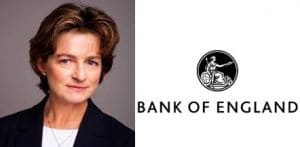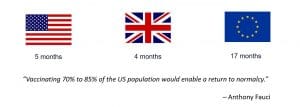Malindi Myers, Bank of England & Janet Mui, Brewin Dolphin (Morning Session)
We brought together speakers to look at what was going on in the economy both in the UK and globally, predictions for the remainder of 2021 and 2022:
- Malindi Myers – South West Agent for the Bank of England
- Janet Mui – Investment Director at Brewin Dolphin
- Panel Members – Chris Mould, Crowe; Nick Latimer, Crowe; Paul Szymanski, AFEX; Trevor Charsley, AFEX; Mike West, NatWest


Malindi Myers, Agent for the Bank of England
Malindi became Agent for the South West in February 2020, having joined the agency as Deputy Agent in April 2018. She leads the Bank’s team in the South West, speaking to businesses and business representative organisations, as well as community and charity organisations, to bring the real economy into the Bank’s policy making areas.
These sessions with the Bank of England are closed to reporting so we do not report directly the conversation or share the slides. This allows Malandi to speak freely and answer questions. We hold these sessions regularly for members. The following is taken from the Financial Policy Summary and Record of the Financial Policy Committee Meeting on 11 March 2021
The Outlook for Financial Stability
Support for the economy to weather economic disruption
UK households and businesses have needed support from the financial system to weather the economic disruption associated with Covid-19 (Covid). The financial system has so far been able to provide that support, reflecting the resilience that has been built up since the global financial crisis, and the extraordinary policy responses of the UK authorities.
The vaccination programme in the United Kingdom has proceeded at a rapid pace and plans for the easing of restrictions on activity have been announced. Nevertheless, households and businesses will need the continued support of the financial system. Businesses, including many small and medium-sized enterprises, still need to finance cash-flow deficits this year, even as the economy recovers. And it will be important for lenders to work flexibly with household borrowers as payment deferral schemes unwind. The banking system has the capacity to continue to provide that support, even if economic outcomes are considerably worse than currently expected. This reflects the build-up of substantial buffers of capital since the global financial crisis. Major UK banks’ and building societies’ (banks’) aggregate Common Equity Tier 1 capital ratio increased to 16.2% at end-December.
Cutting support to avoid the use of capital buffers would be costly for the wider economy and consequently for banks themselves. As government-backed lending guarantee schemes are scaled back, it is in banks’ collective interest to continue to support viable, productive businesses, rather than seek to defend capital ratios by cutting lending, which would have an adverse effect on the economy and therefore could have an even greater negative effect on banks’ capital ratios. The FPC expects banks to use all elements of capital buffers as necessary, to continue to support the economy through the recovery phase. To this end, the FPC is maintaining the UK countercyclical capital buffer (CCyB) rate at 0% and expects to maintain the 0% UK CCyB rate until at least December 2021. Any subsequent increase would therefore not be expected to take effect until end-2022 at the earliest.
Read Full Report: Financial Policy Summary and Record of the Financial Policy Committee Meeting on 11 March
2021: Bank of England Financial Policy Summary 11 march-2021
![]()
Janet Mui, Investment Director, Brewin Dolphin
Most of us will have little fondness for 2020. There is no doubt that 2020 was a difficult year for almost everyone. The global lockdowns during the Covid-19 pandemic resulted in a deep contraction for the global economy. In the UK, we saw business closures, job losses and rising government debt. Most economies made a start getting back to normal once lockdowns were lifted before further waves of the virus brought more restrictions. However as we move into the second quarter of 2021, the prospects look brighter.
Estimated number of months* it will take to cover 75% of the population

Listen to Janet’s analysis of the current climate and predictions for the rest of 2021 and 2022:
Download Janet’s slides: economy_Janet Mui
![]()






